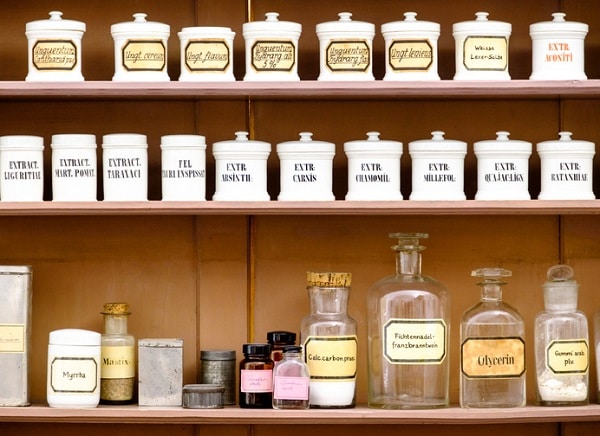In a Pharmacy Assistant Course? Discover the History of Pharmacy
November 11, 2019
Pharmacists have been around for a long time in one form or another. For thousands of years, humans have been using plants for health purposes. Eventually, this practice evolved into the role of the pharmacist that we know today.
If you’re considering a career as a pharmacy assistant, you may be interested in learning about the long story of how pharmacists and pharmacies came to be. Let’s take a look at the fascinating history of a field that you could one day find your career in.
Pharmacy Is So Old That Even Neanderthals May Have Been Aware of It
The practice of using plants and other substances to heal people is incredibly old. In fact, even our closest cousins the Neanderthals may have used penicillium—a mold from which our own penicillin is derived—as an antibiotic more than 40,000 years ago.
The Sumerians, meanwhile, who formed the first human civilization in what is now Iraq, left behind tablets containing the oldest known prescriptions. The Sumerians also believed that the god of the underworld, who they called Ninazu, was also the god of healing and of snakes, which is why the snake is a symbol of pharmacies to this day. Egyptians, Greeks, and Romans also had herbalists who specialized in healing plants. Manuscripts from China and India, meanwhile, from the 1st to the 3rd centuries AD included lists of medicinal substances.
The First ‘Real’ Pharmacy Was Created in the 8th Century in Baghdad
In the Ancient world, physicians largely did the job of pharmacists. While herbalists collected plants, it was the physician who compounded and administered them to patients. This changed thanks to the Islamic Golden Age, which was a period of intense scientific research in the Islamic world during the 8th to 14th centuries. In fact, the first pharmacy that would resemble the sort of drugstore you may work in after your pharmacy assistant training opened in Baghdad in 774.
Arabic medical texts began to be translated in Latin in the 11th century, which led to the spread of pharmacies across Europe. Remarkably, some pharmacies from this period are still around. For example, a pharmacy in Dubrovnik, Croatia opened in 1317 and is still functioning today. And when pharmaceutical knowledge spread to the American Colonies, none other than Benjamin Franklin helped establish the first hospital pharmacy at the Philadelphia Hospital, which is today the Pennsylvania Hospital.

Many Concepts You’ll Learn in Pharmacy Assistant Training Stem from the 19th Century
It was during the 19th century that many of the concepts you will learn about in your pharmacy assistant course, such as contamination control, were first developed. Prior to industrialization, pharmacology was based largely on collecting and mixing botanicals. However, when 19th century dye manufacturers in Germany perfected the purification of organic compounds, it allowed for new drug discoveries to be made. In fact, many of today’s biggest drug makers, including Bayer, Agfa, and Sandoz (now Novartis) began as dye manufacturers.
Changes continued unabated into the 20th century, especially in terms of regulation. In the U.S., for example, the Durham-Humphrey Amendment, which was sponsored by Senator, former pharmacist, and later Vice President Hubert Humphrey, made it illegal for pharmacists to dispense habit-forming drugs without a physician’s prescription. In Canada, meanwhile, the first drug schedule for prescriptions was passed in 1963-64, which provided a guideline for drugs that required a prescription, thus increasing the safety of the pharmaceutical industry.

Do you want to become a pharmacy assistant?
Contact Medix College to learn about our pharmacy assistant diploma in Ontario.




